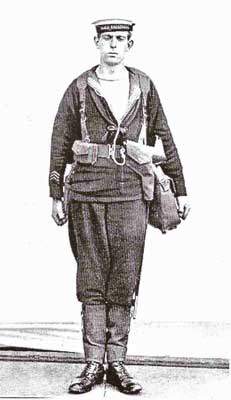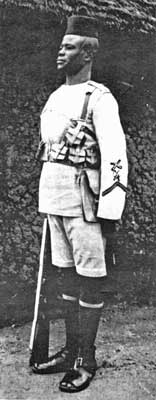Preparing for the Next War, or Perhaps Not
 By the end of the war, the Mills Equipment Company had developed designs that went far beyond their Pattern 1908. The emphasis, actually from pre-1914 was equipments that were lighter and more flexible that Patt. ‘08, while still incorporating its basic principal of being an integrated webbing system. Pattern 1919 used the adjustable backstrap, integrally woven cartridge carriers, and reduction weave braces, that MECo had pioneered in 1911 and which was first used in Commonwealth service in the Pattern 1913 Web Equipment, as the Canadians simply termed it.
By the end of the war, the Mills Equipment Company had developed designs that went far beyond their Pattern 1908. The emphasis, actually from pre-1914 was equipments that were lighter and more flexible that Patt. ‘08, while still incorporating its basic principal of being an integrated webbing system. Pattern 1919 used the adjustable backstrap, integrally woven cartridge carriers, and reduction weave braces, that MECo had pioneered in 1911 and which was first used in Commonwealth service in the Pattern 1913 Web Equipment, as the Canadians simply termed it.
 When the war ended, the inevitable happened and money for re-equipping the British Army just was not available. The Army had literally hundreds of thousands of sets of Pattern 1908 in its stores and the politicians were quick to cut the military's budgets to the bone, and a bit past. Finely crafted as it was, Pattern 1919 W.E. was not going to replace Pattern 1908.
When the war ended, the inevitable happened and money for re-equipping the British Army just was not available. The Army had literally hundreds of thousands of sets of Pattern 1908 in its stores and the politicians were quick to cut the military's budgets to the bone, and a bit past. Finely crafted as it was, Pattern 1919 W.E. was not going to replace Pattern 1908.
As its history repeatedly proved, the Mills Company was nothing if not flexible. Finding a bit of interest from the Royal Navy, M.E. Co redeveloped the infantry set and adapted it as a pistol and cutlass gear, producing what the Company called "Pistol Accoutrements: Mills Web Pistol Equipment, Rucksack (Back Adjustment Model), convertible into a Rifle Equipment." This somewhat awkward term appears in the title of the set of Mills Company Fitting Instructions reproduced in Rick Landers’s British Commonwealth Web Equipment 1871-1944. It is important to note that Mills Company nomenclature and Service nomenclature are distinct from one another. In this case, the War Office introduced the new pattern by L. of C. §23254, designating it as Web equipment, Naval, pattern 1919. It will be referred to here as Pattern 1919 Naval Web Equipment.
Pattern 1919 Naval Web Equipment was intended as an equipment for those armed with the revolver, i.e. officers, with Pattern 1908 W.E. continuing in general use, in particular for Naval Landing Parties. The new Pattern was used by Regulators of the Naval Police, some Royal Marines, and others who carried a cutlass.
The 1920 Field Training Manual of the Royal Navy illustrated an adaptation, whereby the Pattern could be turned into a Rifle Equipment. This entailed Cartridge Carriers being substituted for the Brace Attachments, Pistol Case and Cartridge Pouch. This seems never to have been used by the Royal Navy, outside of the few photographs in the Manual. However, the rifle version of Pattern 1919 W.E. did exist. It was never adopted by the British Army, but it was purchased and used by the Royal West African Frontier Force (right, above). Unfortunately, this is an area that has never received the interest and study it deserves. To date, almost nothing has been published to document this interesting part of British colonial history. One unusual sale was to the Spanish Foreign Legion, whose soldiers wore the Cartridge Carriers, with one photo showing a young officer in the Pistol Equipment. The officer rose to be Gen. Franco!